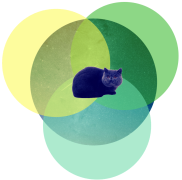
Map makers, Google Earth developers, astronauts and those who gaze at the earth and universe for a living are already convinced of the tremendous beauty of large places seen from space. For most of us mere mortals we won’t ever get the chance to see the earth from space.
The ‘Overview Effect’ was a term coined by astronauts in the 1980’s, who, after orbiting around our pale blue dot were overcome by an overwhelming sense of beauty, harmony and fragility of our planetary home.
From our largely horizontal access to the world’s surface, we don’t really clock the magnitude of the beauty, symmetry and intricacy of both man-made and natural structures. It’s only when we’re aloft in a plane and gazing down do we experience this fleeting sense of wonder. The website and new book the Overview Effect seeks to rectify this imbalance by providing a steady stream of harmonious and aesthetically-beautiful geo-locations on the pale blue dot to whet your appetite for cartographic wonder and travel.
Not only that, with side-by-side comparisons over time, we can see quite starkly and clearly, the devastating impact of human civilisation on jungles, deltas, icebergs and reefs. Vibrant colours bleeding into each other, harmonious confluences of lines and shapes and sacred geometry all unfold here on a meta-level and will leave you breathless with wonder.
Part 1: Cyanobacterial Bloom in the Baltic Sea
In August 2015 a massive bloom of cyanobacteria – more than 100 square kilometers, was seen in the Baltic Sea. Cyanobacteria are a type of marine bacteria that capture and store solar energy through photosynthesis. While some are toxic to humans and animals, large blooms can cause an oxygen-depleted dead zone where other organisms cannot survive. Scientists believe that blooms are more likely to form in the presence agricultural and industrial run-off or from cruise ships that provide excessive nutrients for the bacteria through the dumping of sewage. Image courtesy of NASA.
